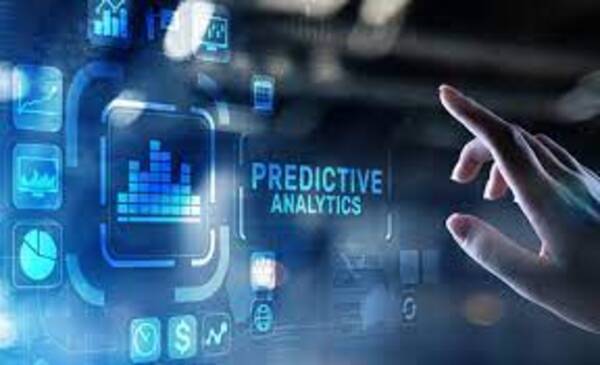
Why Predictive Analytics Is Important To Enrollment?
There are numerous applications for predictive analytics. The rising college dropout rate is one ongoing problem that predictive analytics is assisting in resolving. The back end of the admissions process is enrollment management, which is becoming more automated with the help of predictive analytics. But why is enrollment important to predictive analytics? Discover the solutions by continuing to read.
What Is Predictive Analytics?
Many colleges and universities are unaware of the potential of predictive analytics when it comes to increasing student retention. Institutions can make informed enrollment decisions by combining data, analytics, and automation.
They can also predict the trajectory of each student’s success and take action before it’s too late. This technology may result in higher conversion rates and more informed proactive outreach, two essential elements required to successfully address the rising drop-out rate.
How Predictive Analytics Can Benefit Higher Education?
In order to take advantage of predictions, schools must integrate vast amounts of data from various repositories before deciding how to divide up their organizational attention and resources.
With that knowledge at hand, they are better equipped to decide how to reduce operational snags and enhance the acceleration and execution of actions that have an impact on goal-driven outcomes.
Predictive analytics may not be adequate to meet colleges and universities’ current needs, according to some critics.
The claim is that the information that is currently available about student intentions and needs has changed so drastically over the last few months that it is no longer able to accurately predict what will happen.
The timing of the data’s use, however, is crucial to the entire purpose of using data to make decisions. Predictions are always based on new information that is influenced by shifting behaviors because data changes continuously.
Predictive analytics will likely be most useful during periods of significant change, and colleges and universities will profit from using it as they make plans for the fall of 2020 and beyond.
Let’s think about the potential of predictive analytics and examine what uses it has made in education:
- Create programs and frameworks that make student success a primary element of the school’s mission
- Enable a discipline of adaptability and flexibility that enable schools to meet changing needs as they arise
- Deploy technology effectively to solve operational issues
- Maintain quality as a core component of all student-directed efforts
Prescriptive Analytics And Higher Education
Prescriptive Analytics’ Superpower Is Explaining The ‘why’
In addition to predicting what will happen, prescriptive analytics also predicts why it will happen. It offers suggestions for actions that can be taken to benefit from those predictions. Simulation and optimization enable data-driven advice.

Prescriptive Analytics Is Applicable Across Higher Education
Prescriptive analytics can be used by higher education institutions at all organizational levels and across all functional divisions.
There are practical uses for marketing, recruitment, admissions decisions, financial aid awards, student counseling, academic planning, financial forecasting, and executive planning.
They can also be used by everyone from the president to specific advisors and recruiters.
Prescriptive Analytics Improves Outcomes
Prescriptive analytics can be used by higher education institutions to change outcomes by enhancing the interaction between students and the institution.
Prescriptive analytics have helped colleges and universities increase enrollment yield (see example above), maximize net tuition revenue, maximize financial aid, and raise retention or graduation rates.
Plans can be optimized to achieve objectives by determining what influences each student’s behavior and how much.
Prescriptive Analytics Offers Continuous, Real-time Advice
Prescriptive analytics operates around the clock and continuously processes fresh data as it comes online in order to re-predict and re-prescribe solutions.
In order to continue making accurate predictions and offering sound advice, it is crucial to consider the outcomes of suggested actions.
Prescriptive Analytics Is Hard
Prescriptive analytics is a difficult and expensive project to implement and manage because it depends on complex analytics tools, techniques, and technology, such as artificial intelligence, machine learning, heuristics, and algorithms.
Why Use Predictive Analytics In Higher Education?
In order to adapt to the numerous business and operational changes occurring in the education industry, institutions of higher education are using predictive analytics. The three primary motives for why colleges use this tool are listed below:
Targeted Student Advising
As a result, students frequently do not get the individualized attention they require. Few colleges have an adequate number of advisors on staff. The average national caseload of advisees per full-time professional academic advisor was 296-to-1, according to a survey by the National Academic Advising Association (NACADA). The ratio at community colleges increased to 441 to 1.
Predictive analytics-based systems, such as early-alert and program recommenders, can help identify students who need support so that staff and faculty can offer it.
Adaptive Learning
Adaptive learning courseware, which adapts a student’s learning path based on their interactions with the technology, is another innovation being made by colleges using predictive analytics.
Predictive analytics in adaptive learning platforms can assist instructors in identifying students’ learning gaps and then customizing the educational experience to better fit students’ learning styles.
With the aid of this tool, students can accelerate their learning by quickly reviewing material they already understand while receiving extra assistance in areas where they need it.
Manage Enrollment
Predictive analytics is another tool that colleges are utilizing to improve enrollment management strategies. The size of incoming and returning classes can be predicted by schools with the help of this data.

It assists the school in concentrating its marketing and recruitment efforts on the students who are most likely to apply, enroll, and succeed. In order to determine whether a student will accept the financial aid award made to them, colleges use predictive analytics to predict the financial needs of incoming and returning classes.
Approaching Predictive Analytics Ethically
Predictive analytics analysis of individual student data needs to pay close attention to privacy and ethical considerations.
The best predictive models, according to The Atlantic, steer clear of recommending courses of study solely based on a student’s socioeconomic or cultural background. Because structural inequality makes up such a large portion of the world’s population, students from low-income backgrounds, first-generation college students, and students of color typically graduate from college at much lower rates than wealthy white students.
In order to identify which students to target for enrollment or intervention, institutions may use predictive analytics to consider factors such as race, ethnicity, age, gender, or socioeconomic status. This reinforcement of inequality may be done purposefully or accidentally.
It can be challenging for colleges and universities that are just learning how to use analytics to make decisions to use student data ethically, which is why extensive training and security are required.
Improve Student Outreach And Retention
Colleges and universities are in a never-ending cycle of recruiting, enrolling, and retaining students despite the fact that COVID-19 is causing so much change. Schools need to find students who will be a good fit, turn them into students, and then keep them for the duration of their college experience, regardless of how those students are going to learn, whether it be through online classes, on-campus classes, or some hybrid version of the two. Data is where that process begins.
Data has always been a significant part of communicating with potential students. As a result of travel restrictions, traditional recruiting events are being postponed or even canceled, which will limit the number of students that schools can host on-site.
Due to the abundance of options in front of prospects, digital communication will become a crucial channel for marketing efforts. As a result, these efforts will need to be extremely targeted.
Potential students can be reached by schools through paid digital media advertisements, direct mail, email nurturing, and other online formats. Since these channels also give schools a way to gather data, it is likely that these efforts will give schools even more precise information about students’ intentions. As that database of data expands, it begins to influence choices and develop the capacity for forecasting.
Some examples of data sets that schools will be able to collect through direct communication include things like:
- Geographical interest: Schools can maximize their marketing budget by investing heavily in areas where there are concentrations of interested students by having a good understanding of these communities. On the other hand, they can cut back on spending in low-interest areas.
- Financial aid: Schools can determine the likelihood that students will be able to pay for their education and the resulting financial aid requirements that must be met by students. Planning for the economy will benefit greatly from this.
- Hiring: HR teams will be able to scale up or down as necessary by using predictions made by admissions departments about the number of incoming students.
In a similar vein, schools must stay in touch with current students as they spend more time away from campus as a result of sheltering-in-place.

Students will remain connected if teachers keep them informed of impending changes and mentor them through an uncertain future. It is a crucial component of keeping students in school as well.
According to research, retention rates significantly increase and students stay on the path to completion when their needs are being met and they have clear paths to follow to reach their goals.
Schools are able to pinpoint precise areas where they can support a student who is at risk thanks to data about students’ patterns, backgrounds, and behaviors. Some of these include:
- Find out when a student is most likely to leave school. Students may be headed for graduation if their grades start to slip or if they keep accepting workloads that aren’t as challenging. A student can maintain their academic engagement and sense of belonging to their school by receiving intervention through academic counseling, tutoring, or other academic services.
- Determine which students are struggling financially. Algorithms can inform students of additional funding options if their tuition bills are frequently paid late or if they have a complicated web of financial aid options. Or there might be a procedure that instructs the financial aid department to get in touch with the student and set up a meeting to discuss options for paying for their education.
- Be aware of any potential risks to a student’s physical or mental health. Students who may be at risk for particular health issues can be found by combining health services data. To assist students in accessing counseling and other medical and social services to promote wellness, student services organizations can be mobilized.
Predictive data may not be of interest to students, but how colleges and universities use that data will have a significant impact on how well students do. Schools can assist students in more ways than just navigating the four or more years of college by using predictive intelligence and analytics.
They are equipped to have a memorable experience that keeps them interested all the way to graduation.
The Case Of Higher Education Using Predictive Analytics
Institutions have started analyzing demographic and performance data to predict whether a student will enroll at an institution if they will stay on track with their courses or need additional support to ensure they don’t fall behind. This is done to gain a competitive advantage in recruiting and maintaining students.
Institutions have been able to meet their annual enrollment and revenue goals thanks to more targeted recruiting and more intelligent use of institutional aid by analyzing past student data to predict what current and prospective students may do.
In order to improve both student outcomes and institutional efficiencies, colleges have been able to better customize their advising services and personalize learning thanks to predictive analytics.
What Tools Are Available?
Your institution can concentrate on what really matters while connecting all of your data in one convenient location when you use one platform to manage your student, alumni, fundraising, and advancement data.
Einstein Analytics is one tool that integrates with Salesforce remarkably well. With the help of this application, which can automatically analyze billions of data combinations, colleges and universities can gain insight into the future and receive prescriptions.
By revealing new possibilities from within your data, it can assist you in converting your data into actions and facilitate more intelligent and successful constituent interactions.
One university in Georgia is considering using Salesforce’s Einstein Analytics to help faculty deal with the influx of new students while also giving prospective students a sense of belonging.
With the aid of Einstein’s analysis of their data, it is hoped to predict the next set of likely inquiries that prospective students will make in light of their ACT/SAT scores, GPAs, educational backgrounds, and other factors such as their demographics and location. that could encompass thousands of lines of data and aggregate data.
The ability to explore data and discover insights into student behaviors based on prior in-house data collection is made possible by Einstein Analytics, which offers a portfolio of contextually relevant, self-service analytics apps.
If a student has a question that is historically pertinent and is based on previous student interactions, enrollment can proactively forward the answers to that student.
Utilizing tools like Einstein Analytics will give you the chance to shape the future. Artificial intelligence and predictive analytics aren’t just for science fiction movies anymore.
There is no end to the potential effects this tool and others within the Salesforce ecosystem could have on the effectiveness of your institution and the success of your students. In the race to attract the best students, you can gain an advantage by spotting the early warning signs of applicants who might drop out or even lag behind in their academic careers.
By combining these tools with a CRM that connects your advancement, student, and alumni data together to get a 360-degree view of your students, you can have a game-changing impact on your university and the student experience.
Conclusion
Knowing students better is essential given the previously mentioned circumstances. Schools can assist students in more ways than just navigating the four or more years of college by using predictive intelligence and analytics.


